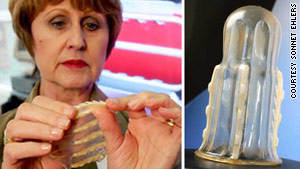The role of communication in development has dramatically
shifted. Srinivas R. Melkote, in her chapter Theories of Development Communication, provides a clear and
comprehensive explanation as to the shift in paradigms regarding the role that
communication and media plays in development. One of the fundamental difference in the approaches
to development that she discusses – modernization and empowerment - centers on
the role of communication.
As theorized under the modernization paradigm, by exposing
the people of the Third World to mass media content from Western society, the
values and behaviors of the Western society would thus be adopted into life in
the Third World and therefore would accelerate modernization and development.
Melkote describes the role of communication under this theory as, “The strength
of the mass media lay in their one way, top-down, simultaneous and wide
dissemination” (110). At the time that modernization theory was held, it was
sincerely believed that this approach, simply exposing developing regions to
Western ideals, would work to provide development benefits to those regions. Media
and communication technology –television and radio productions among the
methods - were powerful tools in this view as these were the means through
which Western ideals were communicated.
This is a stark difference from the empowerment approach of
the modern era that Melkote discusses. Melkote defines development under this
theory as the “process that should provide people with access to appropriate
and sustainable opportunities to improve their lives and the lives of others in
their communities” (113). In this view,
it is more important to understand the values of the developing regions and
finding solutions that will work in those areas based on resources that are
available or can be made available, not dictating that since one solution
worked elsewhere in the world it will therefore work everywhere in the world.
The role of communication under this view is to be participatory, and to act as
a tool of connection for people to reach necessary resources and each other.
Waisbord in his essay Family Tree of
Theories, Methodologies and Strategies in Development Communication states
that the value of this participatory media is “not in being instruments of
transmission but of communication, that is, for exchanging views and involving
members.” (20)
The understanding of the role of communication has shifted.
Modernization was characterized by essentially a ‘communication to’ paradigm
and now theory has shifted to a ‘communication with’ paradigm. This is a theme
that we have seen spread across many of the areas of international communication
that we have discussed in this course. New developments have made communication
technology become more interactive; so did this cause the shift in development
theory? Perhaps because the ways in which we communicate lend themselves better
to participatory, two way dialogues, we have realized the flaws in prior
communication and development strategies. Or is it possible that communication
technology had to change and be
developed in such a way to facilitate these types of interactive conversations because
the paradigms were already shifting?


